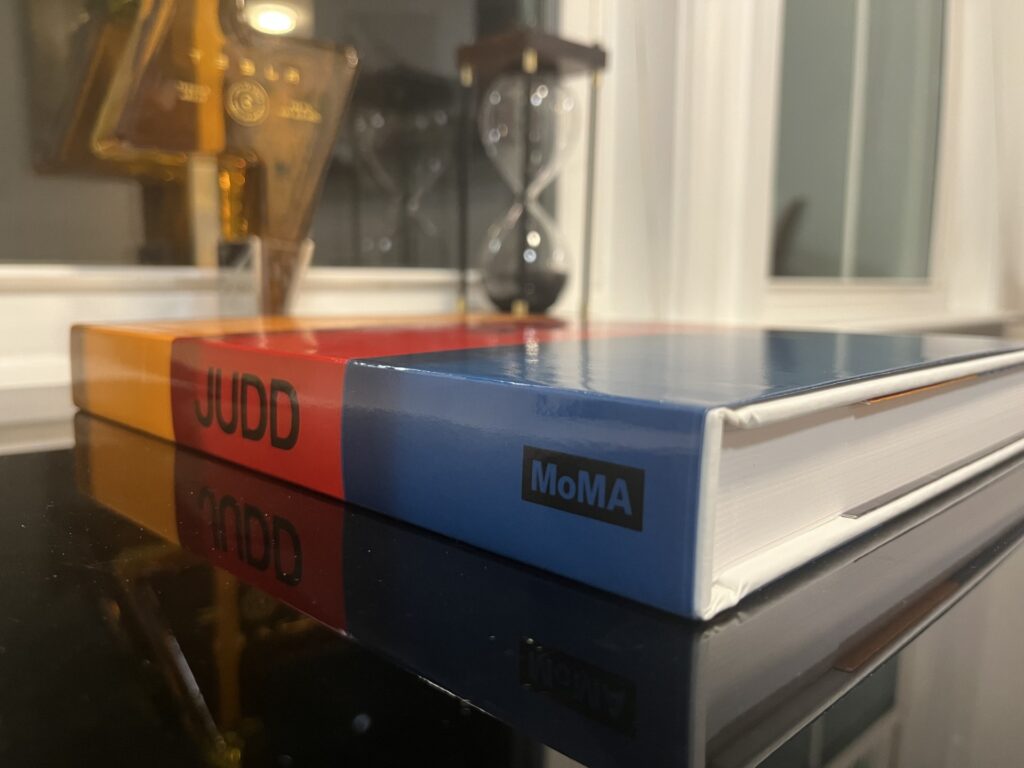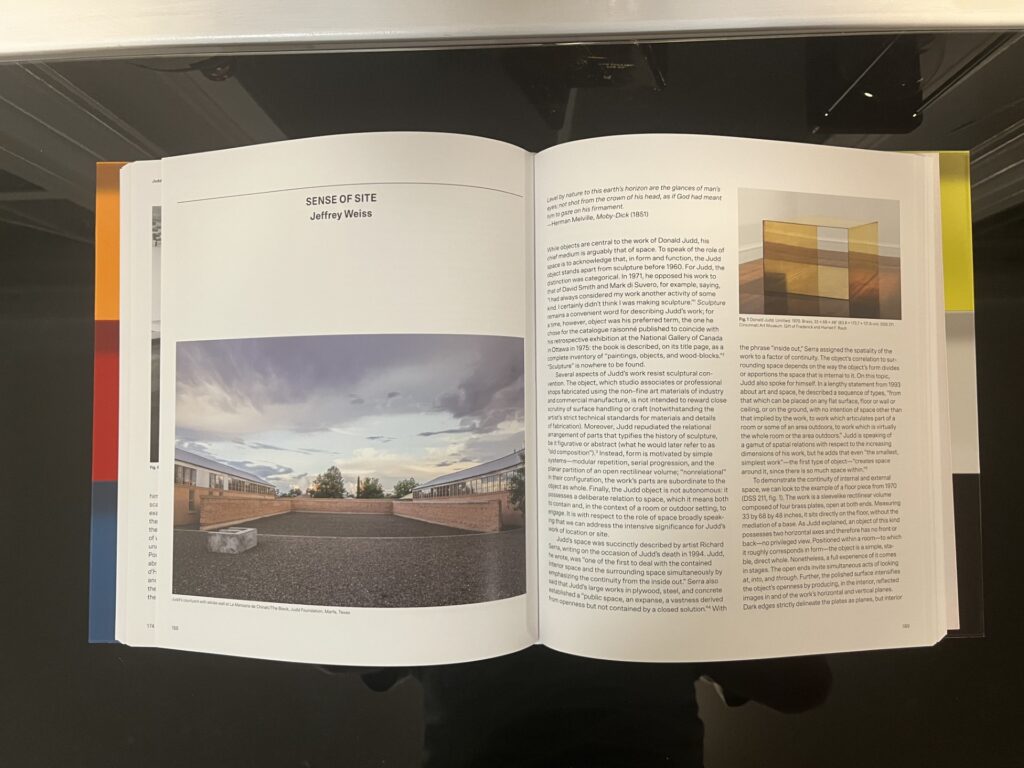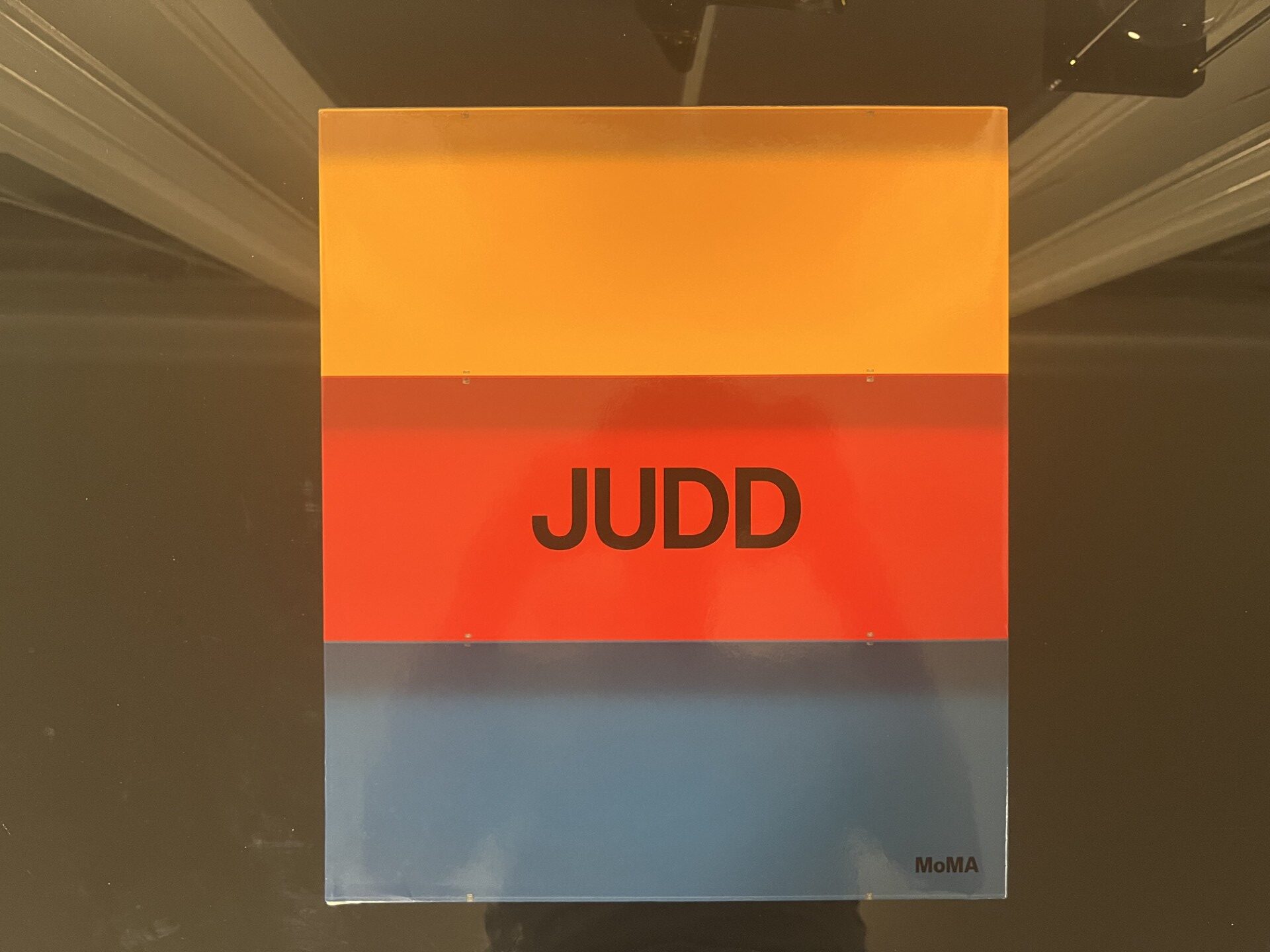The book “Judd,” curated by Ann Temkin, is a stunning exploration of the work of Donald Judd, a key figure in minimalist art. This coffee table book offers a comprehensive look at his innovative sculptures, architecture, and furniture that have left a lasting impact on modern art. Through a mix of visuals and insightful commentary, readers can appreciate the evolution of Judd’s artistic language over the decades.
As the first major retrospective in over 30 years, this book connects Judd’s work to early avant-garde movements, offering context to his unique style. The beauty of the book lies not only in its artistic presentation but also in the way it invites viewers to contemplate the simplicity and complexity of Judd’s creations.
Fans of contemporary art and design will find this book a valuable addition to their collection. Judd serves as both an introduction for newcomers and a deep dive for those already familiar with his influence.
Who Is Donald Judd?
Donald Judd was a significant figure in American art, known for his minimalist sculptures and unique approach. His journey from early life to becoming a prominent artist showcases his influence on modern art.
Early Life and Education
Donald Judd was born on June 3, 1928, in Excelsior Springs, Missouri. He grew up in a family that valued creativity, which shaped his artistic path.
He attended the College of the Southwest in New Mexico, focusing on philosophy and painting. Later, he moved to the Art Students League in New York City.
Judd’s education laid the groundwork for his artistic voice, combining ideas from philosophy with visual art. His early experiences influenced his minimalist approach.
Rise to Prominence
Donald Judd’s rise to fame began in the 1960s when he became a leading figure in the minimalist movement. His first solo exhibition was in 1963 at the Green Gallery in New York.
Judd’s work was marked by simple, geometric forms that emphasized materials and space. He rejected traditional sculpture ideas, focusing on objects that were free from representational influences.
Throughout the 1970s, his reputation grew as he became known for large-scale installations. His pieces were showcased in major art institutions, solidifying his place in art history.
Philosophy and Style
Judd believed in creating art that had a direct physical presence. He often said that his objective was to produce objects that stood on their own without needing explanation.
His style included using industrial materials like metal and plywood, reflecting his commitment to straightforwardness. He aimed to eliminate illusion and narrative, bringing clarity to each piece.
The simplicity of his designs allowed viewers to interact with the space around them. This focus on material and form made Judd a pivotal figure in modern art.
Ann Temkin’s Perspective on Judd
Ann Temkin offers a unique viewpoint on Donald Judd’s work, shaped by her deep academic understanding and personal experiences. Her insights reflect both a scholarly approach and emotional connection to Judd’s minimalist art.
Academic Insight
As a leading curator, Ann Temkin’s academic approach to Judd’s work is comprehensive. She emphasizes how Judd redefined modern sculpture through innovative materials and forms. Temkin highlights the artist’s key principle of design, which is to let the materials speak for themselves.
In her exhibitions, she incorporates thorough research and analysis of Judd’s methods. This attention to detail helps viewers appreciate the intricate relationship between form and space in his creations. Temkin’s essays dive into his early career, exploring how his painting background influenced his transition to three-dimensional works.
Personal Anecdotes
Ann Temkin also shares personal stories that illustrate her connection to Judd’s art. She recalls attending an exhibition where she first experienced the impact of Judd’s work on her emotions. This experience deepened her appreciation for minimalism and solidified her commitment to curating his retrospective.
In interviews, she talks about discussions she had with Judd’s family and friends during her research. These conversations provided invaluable insights into the artist’s thought process and intentions, enriching her understanding. Temkin’s passion for Judd is evident in her dedication to promoting his legacy through exhibitions and publications.
Coffee Table Book Essentials
When choosing a coffee table book, certain aspects stand out. Key elements such as visual design, the presentation of featured works, and overall readability play crucial roles. Each of these factors contributes to how well the book captivates its audience.
Visual Appeal and Design

Visual appeal is essential for a coffee table book. It should invite readers to pick it up and explore its contents. Books like Judd feature high-quality paper and striking layout choices. The use of color, font, and image placement can create an engaging experience.
In Judd, the design reflects the minimalist style of Donald Judd’s work. The illustrations are thoughtfully curated, displaying the elegance of his art without clutter. Eye-catching graphics combined with sleek binding enhance the book’s overall aesthetic.
Judd’s Works Highlight
A successful coffee table book showcases the artist’s works effectively. Judd includes various pieces that capture the essence of Donald Judd’s minimalist approach. Each featured work often includes a brief description, giving context without overwhelming the viewer.
This balance allows readers to appreciate the art while gaining insight into its significance. The photographs often highlight textures and forms that are central to Judd’s design philosophy. Engaging with these images can spark conversations and interest in both the artist and the style.
Readability and Format

The readability of a coffee table book is just as important as its visuals. In Judd, the text is concise and complements the images. Using a clean and modern font, the book ensures that the written descriptions are easy to read and understand.
The format of the pages also matters. Each page is designed for visual flow, allowing readers to navigate through the book seamlessly. The combination of images and text invites the reader to linger and explore, making it a delightful addition to any table.
Cultural Impact of Judd’s Work
Donald Judd’s minimalist approach has shaped modern art and continues to influence various artistic movements. He transformed perceptions of sculpture and challenged traditional notions of space and form. His legacy is evident in countless exhibitions and the ongoing interest in his work.
Influence on Modern Art
Donald Judd’s work played a crucial role in the shift towards minimalism in the 1960s. He emphasized simplicity and geometric forms, moving away from detailed ornamentation. This new direction allowed artists to explore more profound concepts using fewer materials.
His iconic use of industrial materials led to a redefinition of sculpture. Judd’s boxes and stacks encouraged artists to think beyond traditional boundaries. They focused on the object’s surroundings, creating a dialogue between art and space.
Judd’s influence extends to contemporary artists. Many draw inspiration from his commitment to form and function. His work encourages a more profound engagement with the environment, pushing artists to explore different perspectives.
Legacy and Exhibitions
Judd’s legacy includes a series of influential exhibitions that keep his vision alive. The recent retrospective at the Museum of Modern Art was the first major showcase in over 30 years. It highlighted his significant impact on the art world while attracting a diverse audience.
In addition to museum exhibitions, his work is displayed in numerous galleries. The Chinati Foundation in Marfa, Texas, is an important site dedicated to his work. This institution preserves a collection of Judd’s art, allowing visitors to experience his vision in a unique setting.
His ongoing influence ensures that Judd’s ideas and artworks remain relevant today. Artists and curators continue to explore and celebrate his contributions to modern and contemporary art.
